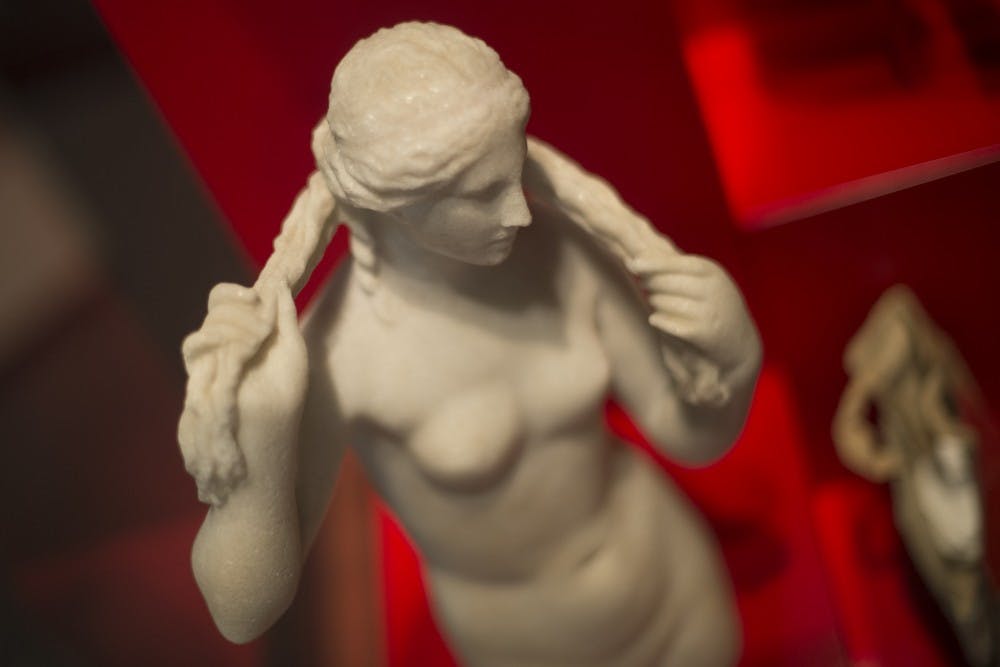
Benghazi Venus, the ancient Greek goddess of sexuality, beauty, and love, is one of the 30 relics currently on display at the Penn Museum.
Credit: Alex FisherLet’s talk about sex — “Sex: A History in 30 Objects” is a small exhibit at the Penn Museum that does just that. From Oct. 17 to July 31, this exhibit will showcase art from across continents and through time to broaden our idea of sex.
“We wanted to look at how sex actually figures in human society,” Lauren Ristvet, associate curator of the Near East Section and curator of the exhibit, said. “By looking at sex really broadly and around the world, we are trying to denaturalize notions of sex.”
The exhibition pulled pieces from various preexisting collections within the museum to create a diverse exhibit in terms of both culture and era. The pieces chosen for the exhibit range from a Native American Lakota pipe bag belonging to a member of a “third-gender,” to Roman pendants in the shapes of genitalia which offered protection to the wearer. The oldest piece in the exhibit dates back 5,000 years, while the newest piece was made in 2012.
“It was perfect for the museum which thinks of archeology as really existing between biology and culture at a point of articulation between the two,” Ristvet said.
The exhibit is organized into five themes: Love and Sex; Beauty, Desire, and Attraction; Religion and Sex; Gender Diversity, Gender and Society; and Initiation and Ceremony. The goal is to explore ideas about sex and gender that are are not as blatant as intercourse.
“There has been a huge change in sex and what is normal and what is not in the past 10 years or so. And of course there has been a huge switch if you look at the last 100 years. I wanted to do something that put both of those things in the historical perspective,” Ristvet said.
This exhibit serves as a valuable resource for students in gender, sexuality and women’s studies courses. College freshman Anisha Yerram visited the exhibit as part of an assignment for her gender and society class.
The exhibit has helped her to learn that gender is a socially constructed concept, and that is why it varies so much around different cultures and different places. “People are constantly changing, and their ideals are constantly changing,” Yerram said.
The exhibit is presented in conjunction with the Penn Humanities Forum, a program run through the School of Arts and Sciences. Each year, the Penn Humanities Forum chooses a new broad topic to focus on, such as past topics like human nature and color. It collaborates with many areas of the University, like the Penn Museum, Penn Libraries, Penn Cinema Studies, the Department of History and the Department of English.
“Every year, we open up the dialogue, and we broaden people’s understanding of what that topic may or may not mean,” said Jennifer Conway, the associate director of the Penn Humanities Forum.
The topic is chosen based on the expertise and the interest among Penn’s faculty. The forum is directed at students but also to those outside the Penn community.
“We exist in part to open the dialogue so that it is not just a conversation that academics are having with themselves, but with the public,” Conway said.
The Daily Pennsylvanian is an independent, student-run newspaper. Please consider making a donation to support the coverage that shapes the University. Your generosity ensures a future of strong journalism at Penn.
DonatePlease note All comments are eligible for publication in The Daily Pennsylvanian.




